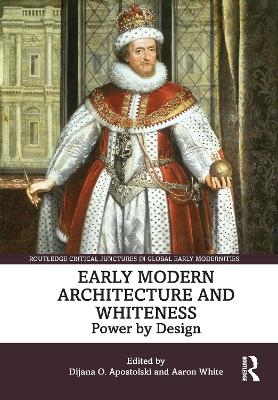
Early Modern Architecture and Whiteness
Routledge (Verlag)
978-1-032-66119-3 (ISBN)
- Noch nicht erschienen (ca. Juni 2025)
- Versandkostenfrei innerhalb Deutschlands
- Auch auf Rechnung
- Verfügbarkeit in der Filiale vor Ort prüfen
- Artikel merken
What was architecture’s role in race-making, constructions of whiteness, and processes of othering more generally? How was whiteness architecturally questioned, reinforced, conceptualized, practiced, and materialized? And how did whiteness intersect with categories such as class, nation, gender, beauty, hygiene, and health? In examining these questions, this volume explores the ways premodern critical race studies allow us to reimagine the boundaries and possibilities of architectural research, design, and practice.
The book will be of interest to scholars working in architectural history, art history, early modern studies, and the history of race.
Dijana O. Apostolski is an architectural historian studying premodern histories of architectural design in relation to histories of the body, materials, and matter. She is a lecturer at the University of Tennessee, Knoxville. Aaron White is an architectural historian studying premodern architecture in its relation to empire. He is an Assistant Professor at Mississippi State University.
Introduction, PART ONE | Constructing the Racialized Body, Chapter 1 | St. Francis/San Francesco: White, Incorrupt, Divine, Chapter 2 | The Man of Swarthy Complexion: From Bernini’s Biographies to the (De)construction of Color, Chapter 3 | “The dead body of a Moor”: Michelangelo, Disegno, and Racecraft in Sixteenth-century Rome, Chapter 4 | “To blanch an Aethiop:” Inigo Jones, Queen Anna, and the Staging of Whiteness, PART TWO | Constructing the Racialized Body-Politic, Chapter 5 | Whitewashing Legibility: Property Surveys and The Logic of Colonial Whiteness in Eighteenth-Century Senegal, Chapter 6 | Muiscas and Moriscos within the Spanish Grid. Privileged mixed-blood settlers in the foundational records of Villa de Leyva (Colombia, 1572-1582) and Campillo de Arenas (Spain, 1508-1539), Chapter 7 | The Appropriation of Mexican Indigenous Material Culture: Architecture, Urban Design, and Antiquarianism in Eighteenth-Century Mexico, Spain, and Italy, Chapter 8 | The Whiteness of Antiquity and Salvation. Tullio Lombardo, Gianmaria Falconetto and the Saint Anthony Chapel in Padua
| Erscheint lt. Verlag | 5.6.2025 |
|---|---|
| Reihe/Serie | Routledge Critical Junctures in Global Early Modernities |
| Zusatzinfo | 10 Halftones, color; 34 Halftones, black and white; 10 Illustrations, color; 34 Illustrations, black and white |
| Verlagsort | London |
| Sprache | englisch |
| Maße | 174 x 246 mm |
| Themenwelt | Kunst / Musik / Theater ► Kunstgeschichte / Kunststile |
| Geschichte ► Allgemeine Geschichte ► Neuzeit (bis 1918) | |
| Technik ► Architektur | |
| ISBN-10 | 1-032-66119-4 / 1032661194 |
| ISBN-13 | 978-1-032-66119-3 / 9781032661193 |
| Zustand | Neuware |
| Informationen gemäß Produktsicherheitsverordnung (GPSR) | |
| Haben Sie eine Frage zum Produkt? |
aus dem Bereich


